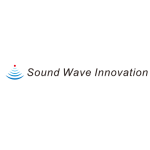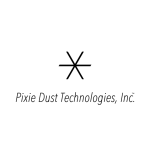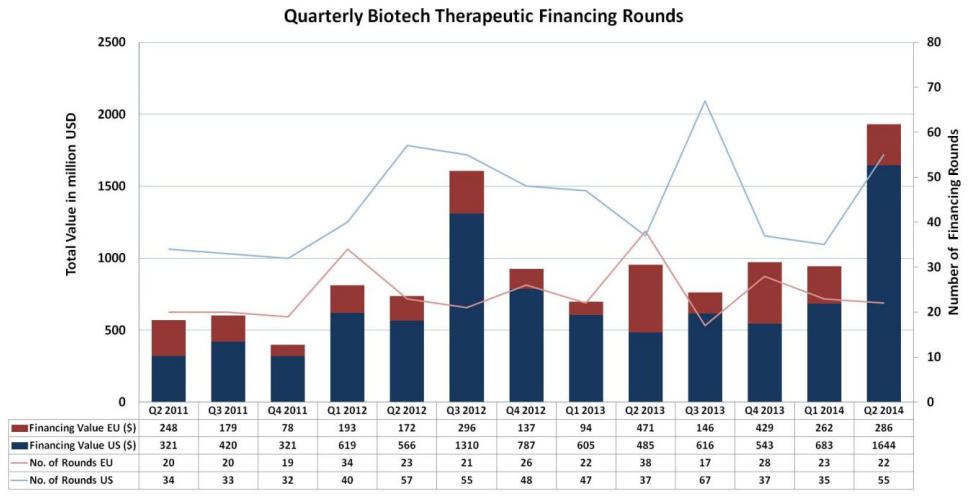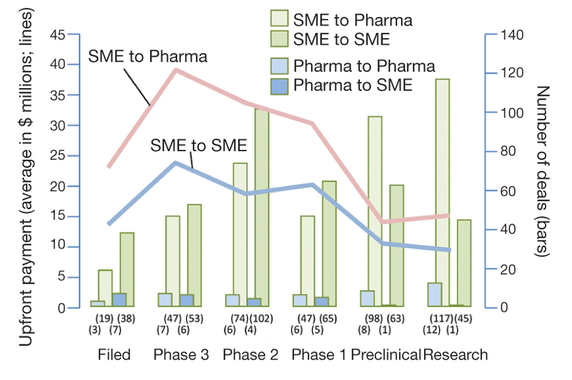Big acquisitions like the recent purchase by Roche, Switzerland of Intermune, USA or AbbVie‘s successful USD 54bn bid for Shire, Ireland, are very good examples of how valuation metrics work and also show that often its not just about price. In case of AbbVie/Shire, potential tax saving was probably the key deal driver. In the case of Roche/Intermune, the pharma company will spend USD 8.4 bn to acquire one product which has been approved in Canada and Europe but not yet in the US.
The lead product of InterMune is called Esbriet, for the treatment of Idiopathic pulmonary fibrosis (IPF), which affects about 100’000 people in the U.S. and around 5 million worldwide. Esbriet has been approved in Europe and Canada, but not yet in the U.S., but analyst expect approval as early Q4 2014. It is not clear what cases IPF (which builds up scar tissues in the lung). Patients often die within three to five years after diagnosis and there currently is no treatment available. Analyst assume that Esbriet could potentially also treat other tissue scarring diseases in the liver and kidney.
Product valuation
The valuation of a biotechnology company can be done in several ways. There is no right methodology and it makes sense to approach things from different perspectives. A gold standard in the industry is the risk adjusted net present value or rNPV. This valuation approach is based on the classical discounted cash flow with some special adjustments for the biopharma sector.
The rNPV calculation can be split into 4 different elements:
- Development phase;
- Market phase;
- Risk adjustment;
- Discounting to present value.
With these four parts it becomes possible to built a free cash flow model looking 15 years into the future. For Esbriet the patent expiry will already happen in 7 years, but we would still consider a 15 year period, however with generic competition after this patent protection period.
Development phase:
The development phase is looks at the cost and timeline for brining the product to the different markets. In the case of Intermunes Esbriet, the product is already approved in the EU and Canada and for the US it is in the process of registration. As such there might be some additional registration costs in the US to be considered, and the product could be expected to be on the market within one year. Additionally, if we later consider other markets such as Japan/Asia, South America and other emerging markets, typically where Roche already sells its respiratory products, the costs for additional registration in these markets and also the timeframe until when market entry can be expected, should also be considered.
Market phase:
For the market phase, it is important to consider the prevalence (how many patients actually have the disease), the pricing of the drug in the different markets, the competition and again based on the development timelines, the time when the product can be sold on the different markets.
The prevalence is estimated to be 13 to 20 per 100,000 people worldwide with around 100’000 affected in the US for IPF. Currently the pricing in Canada/Europe for Esbriet is around USD 40’000 per patient per year. Analysts estimate Esbriet could reach peak sales of over USD 1 bn per year, making it a blockbuster drug. In terms of competition, German Boehringer Ingelheim is in the process of registration of a new therapy called nintedanib which is expected to get a decision by the FDA in Q1 2015.
Based on this information, a revenue projection can be generated taking into account prevalence, pricing and competition. Obviously, one can use different scenarios, apply different prices and different market shares for different markets. However, it should be clear despite all the calculations and scenarios, at the end its all based on the assumptions and expectations. Valuation is not a precise science, but rather an art.
Risk:
Compared with a discounted cash flow valuation the risk in an rNPV is split into two parts 1) product specific attrition risk (risk adjustment) and 2) the general business risk (discounting).
Risk adjustment:
For the risk adjustment it is possible to use historical information of the success rate for a product in a specific indication, to move successfully from one phase to the next. Table 1 shows the average success rate for respiratory diseases. So from lead optimization to the market, the chance to be successful is 12%. To sucessfuly complete phase II clinical trial is 41%. Based on this standard assumption, Esbriet has a 100% chance in Europe/Canada reaching the market – as it is already approved – and a 77% chance in the US. One can assume with an approval in Europe/Canada that the chance in the US could be higher, but there is still no guarantee.
| Average Success rates Respiratory |
| Lead optimisation |
Preclinical |
Phase I |
Phase II |
Phase III |
FDA/EMEA |
Cumulative |
| 70% |
65% |
63% |
41% |
60% |
77% |
12.0% |
The yearly cash flows can now be risk adjusted according to their likelihood based on the success rates. Generally, the likelihood for the cost of the current phase (i.e. registration) is 100% as the company needs to spend the money to know if it will pass the phase successfully. As such the revenues in the US could be adjusted with a 77% likelihood or risk adjustment.
Discounting to present value
The next step would be to take the general business risk into account and calculate the present value of the future expected risk adjusted cash flows. For this, a discount rate is used. The discount rate can vary from below 10% to over 26% depending on the company involved. The discount rate reflects the cost of capital and the general business risk. The cost of capital and the general business risk is substantially lower for big pharma companies versus a small biotech company. As a result a big pharma company may be able to pay a higher price for a product / company because their cost of capital and associated business risk is much lower.
For the Roche / InterMune case it is possible to assume a discount rate of below 10% for Roche versus a discount rate of around 15% for InterMune. This, together with the distribution network / know synergies allows Roche to offer a substantial premium over the market share price.
The purchase price of USD 8.3bn is still substantial for a “one trick pony” company (only one major product). Consequently, Roche must expect to be able to launch the product also in other markets and achieve peak sales north of USD 1 bn over a considerable time.
The price that is being paid for a company or a product can vary depending on the acquisition party. Price is in the eyes of the beholder. Valuation can help to provide a basis for negotiations, but price is not equal to value.
Click to see the article published in the GoingPublic Magazin ››






